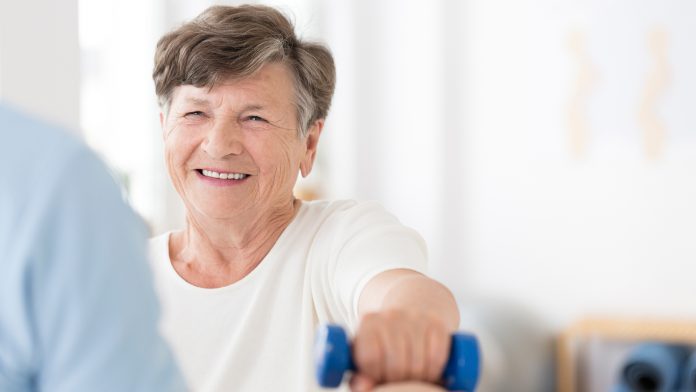
New computer technology can accurately track the progress of stroke rehabilitation, boosting recovery for the patient.
New research indicates that a sensor-equipped computer programme can accurately identify and count arm movements in stroke rehabilitation patients. The researchers from NYU Grossman School of Medicine believe that the next step is to use the tool to define movement intensity to monitor the patient’s ability to move independently and care for themselves following a stroke.
“Our study demonstrates that a digital tool, which is being designed to serve the same function as a smartwatch, is highly accurate in tracking the intensity of patients’ movements during stroke rehabilitation therapy,” commented co-senior investigator Heidi Schambra, MD, an associate professor in the Department of Neurology and the Department of Rehabilitation Medicine at NYU Langone.
The study is in the journal PLOS Digital Health.
The computer tool is 77% effective at identifying arm motions
The researchers studied a computer tool called PrimSeq, developed at New York University, to understand how effective it can monitor limb mobility.
They found the tool to be 77% effective at identifying and counting the number of arm motions completed during stroke rehabilitation exercise sessions. Sensors are strapped to the arms and back to track movements in three dimensions. The developers noted that they plan further testing on more stroke patients to refine their computer model, cut down on the number of sensors needed, and then develop a smaller prototype device for the arm and upper body.
“Such an aid is desperately needed because counts made from video recordings or other wearable sensors do not offer standardised measures of precisely how much rehabilitation exercise each patient is receiving,” said Schambra. “Any improvements in exercise ‘dose’ received must be based on accurate, automated measures of the type and number of arm movements involved in a given exercise.”
Prior studies have indicated that intense upper body exercises can aid stroke recovery in animals, but these findings were not replicated in human trials. The researchers note that this could be due to the lack of technology that tracks arm movements during stroke rehabilitation until PrimSeq.
Studying upper body movements during stroke rehabilitation
The researchers trialled PrimSeq with 41 adult stroke survivors and utilised the tool during the patients’ standard stroke rehabilitation exercise sessions. Exercises and arm movements involved patients feeding themselves with a fork and using a comb.
The team recorded over 51,616 upper body movements with nine sensors. The digital recordings of the movements were allocated into functional categories. They then used machine learning technology to detect patterns within the data and match the patterns to specific upper body movements. The resulting PrimSeq tool was then utilised by a separate group of eight stroke rehabilitation patients who also wore the device during various exercises.
The team tested to see if the tool could accurately identify 12,545 of their total recorded movements according to their functional group. The researchers discovered it was successful in accurately assessing the majority of movements made by patients, all of which had mild to moderate limb impairment following a stroke.
“PrimSeq has state-of-the-art performance in terms of identifying and counting functional movements in stroke patients, and we are gathering more data to continue increasing its accuracy,” said co-senior investigator Carlos Fernandez-Granda, PhD, an associate professor of mathematics and data science at New York University.
“As our research seeks to find optimal levels of training intensity needed for recovery, I would assert that our tool is very promising for clinical use since the alternative is not having accurate counts at all,” added Schambra. “If further experiments prove successful, we will of course be testing the system in clinical trials.”






















